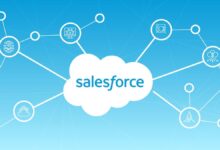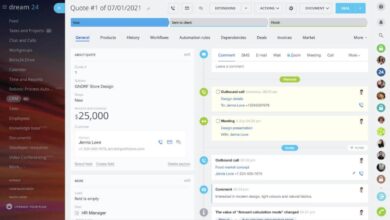HubSpot CRM pricing: HubSpot CRM Pricing: 7 Shocking Truths You Must Know in 2025
Thinking about HubSpot CRM pricing? You’re not alone. Thousands of businesses are trying to crack the code behind its tiers, features, and hidden costs. Let’s dive into the real story—no fluff, just facts.
HubSpot CRM Pricing: The Complete Breakdown for 2025

When it comes to customer relationship management (CRM) platforms, HubSpot stands out as a leader. But understanding HubSpot CRM pricing isn’t as simple as picking a plan and paying a flat fee. The platform uses a tiered model across multiple hubs—Sales, Marketing, Service, CMS, and Operations—each with its own pricing structure. What starts as a free CRM can quickly scale into thousands of dollars per month depending on your business needs.
According to HubSpot’s official pricing page, the CRM platform offers four main tiers: Free, Starter, Professional, and Enterprise. These apply not only to the core CRM but also to each specialized hub. The complexity arises when you start combining hubs, adding users, and scaling features. For example, the Sales Hub Professional plan costs $800/month when billed annually, while the Enterprise version jumps to $3,200/month. That’s a massive leap in investment.
HubSpot CRM pricing – HubSpot CRM pricing menjadi aspek penting yang dibahas di sini.
What makes HubSpot CRM pricing particularly tricky is that the free version includes robust functionality—contact management, deal tracking, email integration, and basic automation. This often leads businesses to adopt it without realizing how fast costs can escalate once they need advanced workflows, reporting, or multi-user access.
Free vs Paid: What You Really Get
The free version of HubSpot CRM is surprisingly powerful. It includes:
- Unlimited contacts and users
- Unlimited email tracking and meeting scheduling
- Deal, task, and contact management
- Basic reporting and dashboard customization
- Integrations with Gmail and Outlook
However, the free tier lacks advanced features like automation workflows, custom reporting, A/B testing, and team permissions. These are only available in paid tiers. So while you can run a small business or solo operation on the free plan, scaling requires upgrading.
HubSpot CRM pricing – HubSpot CRM pricing menjadi aspek penting yang dibahas di sini.
For instance, automation—critical for lead nurturing—is locked behind the Professional tier. That means if you want to send targeted email sequences based on user behavior, you’ll need to pay at least $50/month (billed annually) for the Starter tier of any hub. And that’s per user.
Understanding Tiered Pricing Across Hubs
HubSpot doesn’t sell one monolithic CRM product. Instead, it offers modular “hubs” that you can purchase separately or bundled. Each hub follows the same pricing structure:
- Free: Limited features, great for startups
- Starter: $50/month per user (billed annually)
- Professional: $800/month per hub (billed annually)
- Enterprise: $3,200/month per hub (billed annually)
This means if you want Marketing, Sales, and Service Hubs at the Professional level, you’re looking at $2,400/month. Add in CMS or Operations Hub, and the bill climbs even higher. It’s crucial to evaluate whether you need all these hubs or if third-party integrations could save money.
HubSpot CRM pricing – HubSpot CRM pricing menjadi aspek penting yang dibahas di sini.
For example, many companies use HubSpot CRM free with Mailchimp for email marketing and Zendesk for support, avoiding the need to purchase HubSpot’s Service Hub. This hybrid approach can reduce costs by 60% or more.
“HubSpot’s pricing model rewards all-in adoption but punishes selective usage.” — CRM Analyst, G2
HubSpot CRM Pricing by Hub: Sales, Marketing, Service, and More
To truly understand HubSpot CRM pricing, you need to break it down by each hub. Let’s explore what each offers and how much it costs.
Sales Hub: From $50 to $3,200/month
The Sales Hub is designed for teams managing pipelines, tracking deals, and automating outreach. Its pricing tiers are:
HubSpot CRM pricing – HubSpot CRM pricing menjadi aspek penting yang dibahas di sini.
- Free: Basic contact and deal tracking
- Starter: $50/month per user – includes email templates, sequences, and meeting scheduling
- Professional: $800/month – adds automation, custom reporting, and playbooks
- Enterprise: $3,200/month – includes AI-powered insights, advanced permissions, and audit logs
The Starter plan is ideal for small sales teams of 1–5 people. But once you hit 10+ users, the cost becomes significant. For example, a 10-person team on Starter would pay $5,000/month—more than the Professional plan for the entire hub.
That’s why HubSpot encourages businesses to switch to Professional when scaling. At $800/month for unlimited users, it becomes cost-effective for larger teams. However, you lose granular control over user roles and permissions unless you upgrade to Enterprise.
Marketing Hub: $0 to $3,200/month
The Marketing Hub is one of HubSpot’s most popular products. It includes email marketing, landing pages, social media scheduling, and analytics. The free version offers:
HubSpot CRM pricing – HubSpot CRM pricing menjadi aspek penting yang dibahas di sini.
- Up to 1,000 marketing contacts
- Basic email marketing (up to 1,000 emails/month)
- Landing pages and forms
- Live chat and chatbots (limited)
But for serious marketing automation, you need the Professional or Enterprise tiers. The Professional plan at $800/month unlocks:
- Unlimited marketing contacts
- Advanced segmentation and personalization
- A/B testing
- Custom reporting and attribution
- Multi-touch revenue attribution
One major limitation: the free and Starter plans cap the number of marketing contacts. Once you exceed 2,000 contacts on Starter, you must upgrade. This can catch growing businesses off guard.
For companies running large-scale campaigns, the Enterprise tier offers AI-driven content recommendations and predictive lead scoring. But at $3,200/month, it’s only justifiable for enterprises with complex marketing needs.
HubSpot CRM pricing – HubSpot CRM pricing menjadi aspek penting yang dibahas di sini.
Service Hub: Support Made Scalable
The Service Hub helps businesses manage customer support with ticketing, knowledge bases, and customer feedback tools. Pricing follows the same structure:
- Free: Basic ticketing and knowledge base
- Starter: $50/month per user – includes live chat, customer feedback, and SLA management
- Professional: $800/month – adds automation, macros, and reporting
- Enterprise: $3,200/month – includes AI-powered suggestions and advanced workflows
For startups, the free tier works well. But as support volume grows, automation becomes essential. The Professional plan’s ability to auto-assign tickets and create macros can save hours per week.
However, many businesses find that third-party tools like Zendesk or Help Scout offer similar functionality at lower prices. This makes HubSpot CRM pricing less competitive in the service space unless you’re already invested in the ecosystem.
HubSpot CRM pricing – HubSpot CRM pricing menjadi aspek penting yang dibahas di sini.
Hidden Costs in HubSpot CRM Pricing You Can’t Ignore
While HubSpot advertises transparent pricing, several hidden costs can inflate your bill. These aren’t always obvious during the sales process.
Cost of Add-Ons and Bundles
HubSpot offers “bundles” that combine multiple hubs at a discount. For example, the Professional Growth Suite bundles Marketing, Sales, and Service Hubs for $2,600/month—$200 cheaper than buying them separately. But you still pay $800/month per hub, so savings are minimal.
More importantly, bundles lock you into using all three hubs. If you only need two, you’re overpaying. There’s no flexibility to mix tiers across hubs. You can’t, for example, run Marketing Hub Professional with Sales Hub Starter.
HubSpot CRM pricing – HubSpot CRM pricing menjadi aspek penting yang dibahas di sini.
Additionally, optional add-ons like Custom Objects or Advanced Reporting are only available in Professional and Enterprise tiers. If your business relies on custom data models (e.g., tracking projects, events, or inventory), you’ll need to upgrade even if you don’t need other premium features.
User-Based vs. Flat Pricing: A Cost Trap
HubSpot CRM pricing uses a hybrid model: Starter is per-user, while Professional and Enterprise are flat-rate per hub. This creates a cost trap for mid-sized teams.
Example: A 15-person sales team on Starter would pay $750/month (15 x $50). But the Professional plan is $800/month for unlimited users. So upgrading saves only $50/month—hardly worth the jump in features.
HubSpot CRM pricing – HubSpot CRM pricing menjadi aspek penting yang dibahas di sini.
However, if you have 20 users, Starter costs $1,000/month, making Professional the better deal. The break-even point is around 16 users. This means businesses with 10–15 users often get stuck in a pricing limbo—too big for Starter, not big enough to fully justify Professional.
“HubSpot’s pricing forces companies into all-or-nothing decisions.” — TechCrunch, 2024
Implementation and Onboarding Fees
While not part of the official HubSpot CRM pricing, many businesses hire consultants or agencies to set up their CRM. These services can cost $5,000–$20,000 depending on complexity.
Tasks like data migration, workflow automation, and integration with existing tools (e.g., ERP or e-commerce platforms) require expertise. HubSpot’s free onboarding support is limited to basic training. For advanced setups, you’ll need a certified partner.
HubSpot CRM pricing – HubSpot CRM pricing menjadi aspek penting yang dibahas di sini.
Some agencies offer “done-for-you” implementations starting at $3,000. While this isn’t a recurring cost, it’s a significant upfront investment that should be factored into your total cost of ownership.
Is HubSpot CRM Pricing Worth It for Small Businesses?
For small businesses, the value proposition of HubSpot CRM pricing depends on growth goals and tech stack maturity.
When the Free Plan Makes Sense
If you’re a solopreneur, freelancer, or early-stage startup, the free CRM is more than sufficient. You get:
HubSpot CRM pricing – HubSpot CRM pricing menjadi aspek penting yang dibahas di sini.
- Full contact and deal management
- Email integration with tracking
- Task automation and calendar syncing
- Basic pipeline visualization
Many small businesses never need to upgrade. For example, a consulting firm with 5 clients and 1 salesperson can manage everything in the free tier. The key is avoiding feature creep—don’t pay for automation if you’re manually following up.
Additionally, the free plan integrates with over 1,000 apps via the HubSpot App Marketplace. This allows small businesses to extend functionality without upgrading.
When to Upgrade: Signs You’ve Outgrown Free
There are clear indicators that it’s time to upgrade:
HubSpot CRM pricing – HubSpot CRM pricing menjadi aspek penting yang dibahas di sini.
- You’re manually sending follow-up emails (automation can save 10+ hours/week)
- Your team has more than 2 people needing access
- You need custom reporting or dashboards
- You’re tracking more than 1,000 marketing contacts
- You want to run A/B tests on emails or landing pages
Once these needs arise, the Starter plan at $50/month per user is a logical next step. But be cautious—user count can balloon quickly. A 10-person team jumps to $500/month, which is 62% of the Professional plan’s cost.
In such cases, evaluate whether the Professional plan’s unlimited users and advanced features justify the $800/month price. For fast-growing startups, the answer is often yes. For stable small businesses, it may not be.
HubSpot CRM Pricing vs Competitors: How Does It Stack Up?
To judge whether HubSpot CRM pricing is fair, compare it to alternatives like Salesforce, Zoho CRM, and Pipedrive.
HubSpot CRM pricing – HubSpot CRM pricing menjadi aspek penting yang dibahas di sini.
Salesforce: More Complex, More Expensive
Salesforce is HubSpot’s biggest competitor. Its Sales Cloud starts at $25/user/month for Essentials, $75 for Professional, and $150 for Enterprise. At first glance, this seems cheaper than HubSpot’s $50–$800/month model.
But Salesforce’s lower tiers lack many features included in HubSpot’s free plan. For example, email tracking and meeting scheduling require add-ons. Plus, Salesforce has a steeper learning curve, often requiring paid admin training.
In total cost of ownership, HubSpot is often cheaper for mid-market companies due to easier setup and fewer third-party tools needed.
HubSpot CRM pricing – HubSpot CRM pricing menjadi aspek penting yang dibahas di sini.
Zoho CRM: Budget-Friendly Alternative
Zoho CRM starts at $14/user/month (billed annually) for the Standard plan. Its free plan supports up to 3 users and 1 million records. For small teams, Zoho is significantly cheaper than HubSpot.
However, Zoho’s UI is less intuitive, and its automation engine isn’t as powerful. Integration with marketing tools is also more limited. While Zoho wins on price, HubSpot wins on user experience and ecosystem cohesion.
For businesses prioritizing ease of use and seamless marketing-sales alignment, HubSpot CRM pricing may be worth the premium.
HubSpot CRM pricing – HubSpot CRM pricing menjadi aspek penting yang dibahas di sini.
Pipedrive: Simplicity at a Lower Cost
Pipedrive focuses on sales pipeline management and starts at $14.90/user/month. Its visual pipeline interface is loved by sales teams. The Essential plan includes email integration, automation, and basic reporting.
But Pipedrive lacks native marketing and service tools. To match HubSpot’s full suite, you’d need to integrate with Mailchimp, Zendesk, and others—increasing complexity and cost.
HubSpot’s advantage is its all-in-one platform. While individual tools may be cheaper, the integration overhead can negate savings.
HubSpot CRM pricing – HubSpot CRM pricing menjadi aspek penting yang dibahas di sini.
“HubSpot isn’t the cheapest, but it’s the most integrated.” — Forbes, 2024
How to Optimize HubSpot CRM Pricing for Your Business
You don’t have to accept HubSpot’s pricing at face value. There are strategies to reduce costs and maximize value.
Start Free, Scale Strategically
The smartest approach is to begin with the free CRM and only upgrade when necessary. Use the free tier to:
- Import and clean your contact database
- Map out your sales process
- Test email sequences manually
- Integrate with existing tools
Only upgrade when manual processes become unsustainable. This could take 6–12 months, giving you time to validate your business model before committing to paid plans.
HubSpot CRM pricing – HubSpot CRM pricing menjadi aspek penting yang dibahas di sini.
Bundle Wisely: Avoid Overbuying Hubs
Don’t assume you need all hubs. Many businesses only use Sales and Marketing. If your support is handled via email or phone, you may not need Service Hub.
Instead, use free tools like Trello for ticketing or Typeform for feedback. This keeps your HubSpot costs low while maintaining functionality.
Also, consider using HubSpot CRM free with a third-party email marketing tool. Tools like Brevo (formerly Sendinblue) offer free tiers with 300+ emails/day—enough for small campaigns.
HubSpot CRM pricing – HubSpot CRM pricing menjadi aspek penting yang dibahas di sini.
Negotiate with HubSpot Sales
While HubSpot’s website shows fixed prices, enterprise deals are negotiable. If you’re committing to a 12–24 month contract across multiple hubs, ask for a discount.
It’s not uncommon to get 10–20% off annual pricing for multi-hub Enterprise plans. You can also request extended free trials or onboarding credits.
For nonprofits and educational institutions, HubSpot offers special pricing and grants. Check their Mission Program for up to 90% off.
HubSpot CRM pricing – HubSpot CRM pricing menjadi aspek penting yang dibahas di sini.
Future Trends in HubSpot CRM Pricing: What to Expect in 2025
HubSpot is constantly evolving its pricing model. Here’s what experts predict for 2025.
More AI Features, Higher Costs
HubSpot is investing heavily in AI. Features like AI email writing, predictive lead scoring, and chatbot optimization are becoming standard in Professional and Enterprise tiers.
As AI capabilities expand, expect these to become premium add-ons or require higher-tier plans. This could push more businesses into the $800+/month range, even if they don’t need all advanced features.
HubSpot CRM pricing – HubSpot CRM pricing menjadi aspek penting yang dibahas di sini.
In 2024, HubSpot introduced AI-powered content generation in Marketing Hub. By 2025, similar tools may appear in Sales and Service Hubs, further justifying higher pricing.
Potential for Usage-Based Pricing
Currently, HubSpot CRM pricing is tier-based. But there’s growing pressure to adopt usage-based models, especially for email sends, API calls, or AI credits.
Some competitors, like SendGrid (owned by Twilio), already use pay-per-email models. If HubSpot follows, small businesses could benefit from lower entry costs, while enterprises pay more for high volume.
HubSpot CRM pricing – HubSpot CRM pricing menjadi aspek penting yang dibahas di sini.
However, this could complicate budgeting. A sudden spike in email traffic could lead to unexpected charges.
Increased Focus on SMBs and Mid-Market
Historically, HubSpot targeted small and mid-sized businesses. But with rising competition, it’s doubling down on this segment.
Expect more tailored pricing packages for industries like real estate, agencies, and e-commerce. These may include pre-built templates, workflows, and integrations at bundled rates.
HubSpot CRM pricing – HubSpot CRM pricing menjadi aspek penting yang dibahas di sini.
For example, a “Real Estate Growth Kit” could bundle CRM, email, and landing pages for $300/month—cheaper than buying separately.
Such industry-specific plans could make HubSpot CRM pricing more accessible without sacrificing profitability.
Real-World Case Studies: How Companies Use HubSpot CRM Pricing
Let’s look at how real businesses navigate HubSpot CRM pricing.
HubSpot CRM pricing – HubSpot CRM pricing menjadi aspek penting yang dibahas di sini.
Tech Startup: Scaling from Free to Professional
A SaaS startup with 5 employees started on HubSpot CRM free. They used it for lead tracking, email follow-ups, and pipeline management. After 8 months, they hit 2,000 marketing contacts and needed automation.
They upgraded to Marketing Hub Starter at $50/month and Sales Hub Starter at $50/month—total $100/month. With 5 users, this was manageable. But after hiring 10 more sales reps, the cost would have jumped to $750/month.
Instead, they switched to Sales Hub Professional ($800/month) for unlimited users. The cost was similar, but they gained automation, custom reporting, and team permissions. This saved 15+ hours/week in manual work.
HubSpot CRM pricing – HubSpot CRM pricing menjadi aspek penting yang dibahas di sini.
E-Commerce Brand: Using Free CRM with External Tools
An online store with $2M annual revenue uses HubSpot CRM free for contact management. They sync data from Shopify via Zapier. For email marketing, they use Klaviyo. For support, they use Gorgias.
This hybrid model costs them $300/month in third-party tools but avoids HubSpot’s $1,600+ monthly fee for Professional tiers. They get the best of both worlds: HubSpot’s intuitive CRM and specialized tools for marketing and service.
They plan to stay on this model unless they need deeper automation or reporting.
HubSpot CRM pricing – HubSpot CRM pricing menjadi aspek penting yang dibahas di sini.
Enterprise: Full HubSpot Stack at $10K+/Month
A global B2B company with 200 employees uses all five hubs at the Enterprise level. Their monthly bill exceeds $10,000.
They justify this cost with:
- Centralized data across sales, marketing, and service
- AI-driven insights reducing customer acquisition cost by 22%
- Automated workflows saving 1,000+ hours/month
- Custom objects tracking complex customer journeys
For them, HubSpot CRM pricing is an investment, not an expense. The ROI comes from increased efficiency and revenue growth.
HubSpot CRM pricing – HubSpot CRM pricing menjadi aspek penting yang dibahas di sini.
Is HubSpot CRM pricing worth it? For enterprises with complex needs, the answer is yes.
What is the cheapest HubSpot CRM plan? The free plan is the cheapest—and it’s genuinely useful. The Starter plans start at $50/month per user.
Can I mix HubSpot tiers across hubs? No. All hubs must be on the same tier (e.g., you can’t have Marketing Hub Professional with Sales Hub Starter).
HubSpot CRM pricing – HubSpot CRM pricing menjadi aspek penting yang dibahas di sini.
Does HubSpot offer discounts for annual billing? Yes. Annual billing saves 10–20% compared to monthly payments.
Are there nonprofit discounts for HubSpot CRM? Yes. Through the HubSpot Mission Program, nonprofits can get up to 90% off.
In conclusion, HubSpot CRM pricing is flexible but complex. The free version is powerful for startups, while paid tiers offer deep functionality for growing businesses. However, costs can escalate quickly, especially when combining hubs or adding users. The key is to start small, upgrade only when necessary, and consider hybrid models with third-party tools. By understanding the full picture—from hidden fees to competitor comparisons—you can make a smart decision that aligns with your budget and goals. HubSpot isn’t the cheapest CRM, but for many, it’s the most cohesive and scalable solution on the market.
HubSpot CRM pricing – HubSpot CRM pricing menjadi aspek penting yang dibahas di sini.
Further Reading:






